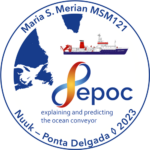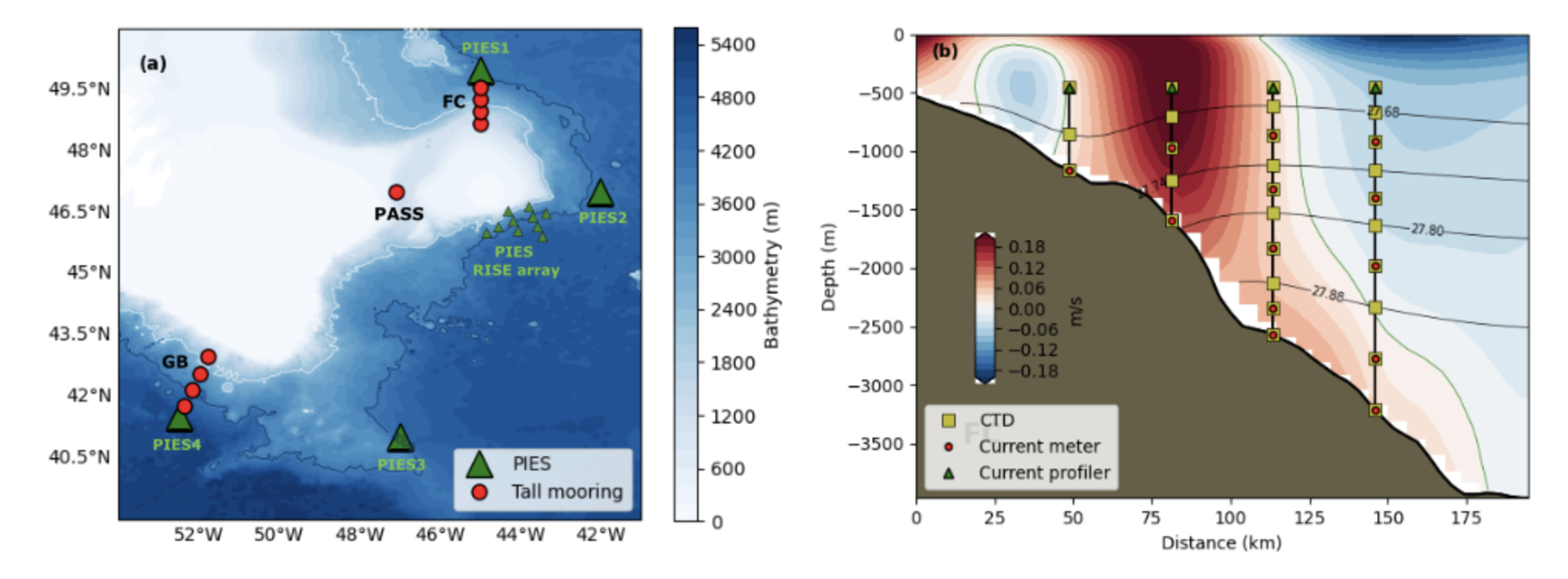
Expedition MSM121 aboard the German research vessel Maria S. Merian marks the beginning of a 2-year field experiment that forms part of EPOC’s work on determining over what regions and on what timescales large-scale ocean circulation behaves as a coherent circulation pattern, as opposed to where coupled or internal ocean processes lead to incoherent behaviour.
The ship will visit the so-called Transition Zone (TZ) between the subtropical and the subpolar North Atlantic, where ocean models show a breakdown of the meridional coherence of the overturning circulation. In the research area around the Grand Banks and Flemish Cap the North Atlantic Current (NAC) reaches from the sea surface to the bottom and flows very close to the opposing Deep Western Boundary Current (DWBC). Interactions between the two currents potentially influence the DWBC and affect its spatial coherence.
During the expedition, tall moorings will be deployed over the continental slope north of Flemish Cap and south of the Grand Banks, as well as an array of compact pressure-inverted echo sounders (PIES) landers. A subsequent expedition in 2024 (via the CROSSROADS project) will acoustically retrieve the first year of data from the PIES while leaving the instruments in place. Final recovery of all assets is planned for 2025.


EPOC is funded by the European Union. Views and opinions expressed are however those of the author(s) only and do not necessarily reflect those of the European Union. Neither the European Union nor the granting authority can be held responsible for them.